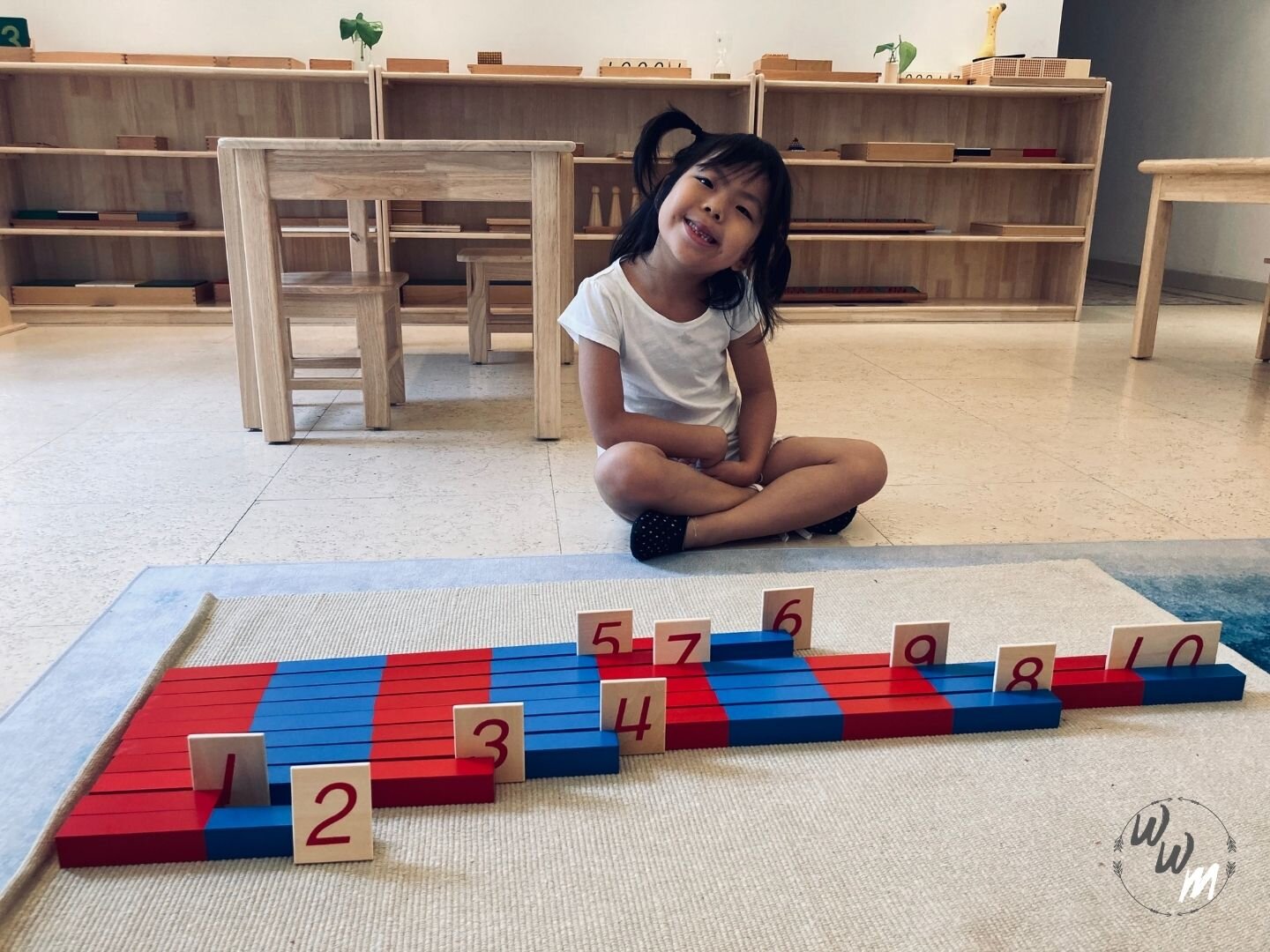Number Rods and Cards (presentation one)
How is the first presentation with the Number Rods and Cards presented?
The directress shows the child how to carry the rods carefully with two hands close to his body, as before, and lay them out randomly on the floor mat. She then shows him how to carry the Number Cards which are kept in a square wooden box with both hands to the mat, placing it beside the rods.
Montessori Number Rods and Cards
How to present the Number Rods and Cards
The directress begins by telling the child that they will match the ‘quantity’ (length and sections in the rod) and the numerical symbol. She starts counting the sections of the closest rod, for example, 1, 2, 3, and 4 - she then takes her time to find the Number 4 card. Once she finds it, she places the number card at the end of the rod. She asks the child to count the sections of the next rod and to find the matching card. The child can complete the activity independently.
What skills the child acquires by doing the first presentation with the Number Rods and Cards
The child acquires many different skills when working with the Number Rods and Cards, such as promoting gross-motor development, perception of dimensions, counting using concrete materials, as well as encouraging one-to-one correspondence with the teacher.
Looking for more Montessori activities?
Here is a list of all the Montessori Maths activities including Early Maths, Introduction to the Decimal System, Seguin Boards, The Hundred Board, The Short Bead Stair, Bead Chains, The Snake Game, Group Operations, The Large Number Rods, Recording with the Small Number Rods, The Short Bead Stair, The Strip Boards, The Boards, The Stamp Game, The Abacus, The Dot Game, and Fractions. Just click on the page you want to learn about to go there.
Early Maths
Introduction to the Decimal System
The Short Bead Stair
Seguin Boards
The Hundred Board
Bead Chains
The Snake Game
Group Operations
Large Number Rods
Recording with the Small Number Rods
The Short Bead Stair
The Strip Boards
The Boards
The Stamp Game
The Abacus
Operations with the Abacus: Static addition (without change)
Operations with the Abacus: Static multiplication (without change)
Operations with the Abacus: Static subtraction (without change)

